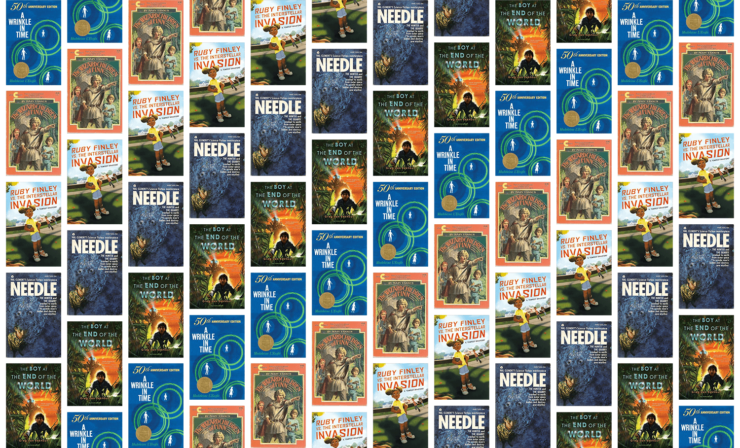Modern nations have invested trillions in defense. A waste of money? Recent events suggest that defense is sometimes all too necessary. Would that it were not so!
In the realm of imagination, the unexpected can prevail. Just as elderly ladies can out-detect the professionals and lone geniuses circumvent known physics, young people can save the world. Or at least save the day. Consider the following five books in which young people do their thing.
Needle by Hal Clement (1950)
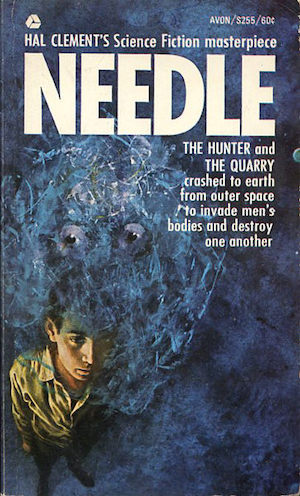
Space cop Hunter and his criminal quarry crash-land on an alien world. The criminal wastes no time hiding itself. Trapped on an unfamiliar world known to some of its natives as Earth, the only thing that works in Hunter’s favor is that the aliens happened to come ashore on a Pacific Island that has only intermittent connections with the wider world (occasional boats and planes). For the moment, the criminal isn’t going anywhere, thanks to facts about alien biology which I will explain in the next paragraph…
The Hunter and his quarry are both obligatory symbionts. They ordinarily live within other intelligent beings; outside such beings, they are mere gelatinous ooze. They can communicate with their hosts or lie hidden; they help out their hosts by protecting them from disease and healing them from injuries.
The Hunter has entered the body of fifteen-year-old Robert Kinnaird. Robert is at first shocked to find himself inhabited, but soon realizes that the Hunter lives by rules forbidding any injury to his host. Robert decides to help the Hunter hunt.
Robert is a bright teen who knows the island and its inhabitants, within any one of whom the criminal might have taken shelter. Will the miscreant betray itself to Robert and the Hunter? Or will it bide its time and escape both the island and its pursuer?
Needle is, of course, a novel written in part to prove that it was possible to write an SF mystery that played fair with the reader. Did it live up to its goal? Purchase the slender novel and find out!
A Wrinkle in Time by Madeleine L’Engle (1962)
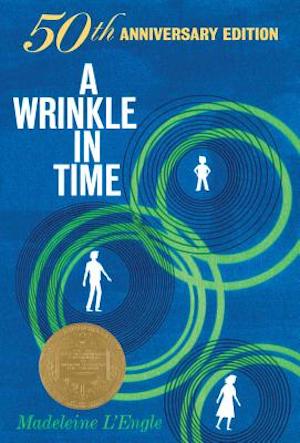
Heretofore Meg Murry’s primary role has been to make her relatives look even more superlative by comparison. Child to brilliant scientists, sister to siblings with impressive academic and athletic records, older sister to a genius telepath mutant, Meg is neither beautiful, nor a scholar, nor does she possess known superhuman abilities. She is, however, quite determined, which will come in handy.
When Meg’s father disappears, conventional society is happy to assume he has abandoned Meg, her mother, and her siblings. Thanks to the intervention of a peculiar trio—Mrs. Whatsit, Mrs. Who, and Mrs. Which—there is a chance that Mr. Murry can be located and rescued. The task falls to plucky Meg, assisted by Charles and neighbor Calvin. Saving her father seems nigh-impossible, imprisoned as he is by an unspeakable entity on a distant planet. Nevertheless, Meg will do her best.
Hands up, everyone who learned about folded space-time from this novel!
There have been a number of movie and television adaptations of this work, adaptations whose casting choices have been widely (often counterproductively) discussed. I myself am very open-minded save for one key detail: MEG MURRY WEARS GLASSES.
The Wizard Children of Finn by Mary Tannen (1981)
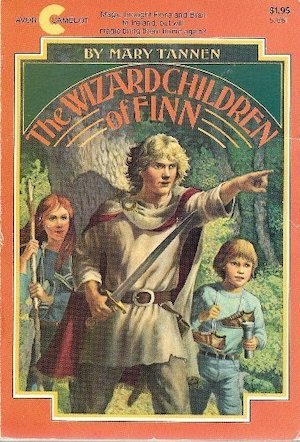
Consigned to their uncle’s Rupert’s estate for the summer, eleven-year-old Fiona and eight-year-old Bran McCool are on their own (with the exception of servants). Rupert is away.
In the woods behind the estate, they encounter young Deime, who has been taken from his time and place—ancient Ireland—by a well-meaning witch and must return to fulfill his destiny. The young visitors go back with him and are his sidekicks in various adventures.
The Boy at the End of the World by Greg van Eekhout (2011)
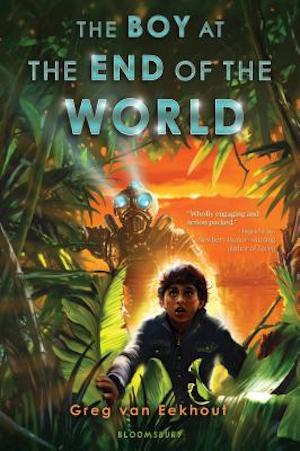
Long after the world’s ruin, newborn Fisher is decanted in the body of an adolescent boy. Among his assets: he was provided with an impressive set of skills appropriate to his intended occupation and he has a helpful robot companion. Fisher is ideally prepared to help reestablish humanity on the recovering Earth, provided only that he awakes in the environment for which he is suited.
Among the immediate challenges facing him: he is not in the intended environment, his skills are irrelevant to the circumstances in which he finds himself, and his robot pal Click is broken. At least this is a world filled with entities as bright as humans. Too bad for Fisher that so many of them would prefer Fisher dead.
In some ways, this is reminiscent of Robert Sheckley’s 1975 Options. Fisher is very lucky to have an author more sympathetic to his protagonist than was Sheckley to his hapless characters. Nevertheless, Fisher does not lack for challenges.
Ruby Finley vs. the Interstellar Invasion by K. Tempest Bradford (2022)
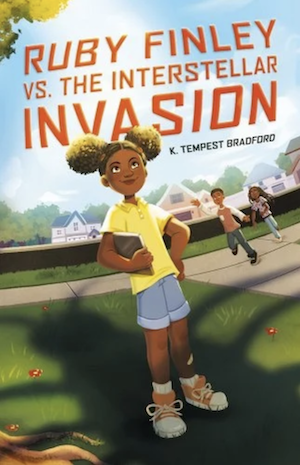
Despite her teacher’s poorly concealed conviction that Black students are sure to be poor students, Ruby is ambitious and imaginative enough to envision an award-worthy bee-related science project. She is smart and diligent enough to see the project through to fruition. As a consequence of her interest in insects, Ruby is also sufficiently knowledgeable to notice an unusual bug. A very peculiar bug.
The bug escapes, but not before Ruby gets a photo. Posting the image to Twitter results in a posse of Men in Black descending on her neighborhood; they want the bug, but they won’t tell her why and won’t tell her what they know about the bug.
It’s probably no spoiler to tell you that this is an alien bug. It’s missing but certainly not gone (as Ruby can tell from odd events in her neighborhood). Is it hostile to humanity? Is the bug a possible friend? Ruby and her classmates will have to find out.
***
There’s no lack of stories whose embattled protagonists are young, appealing, and often in danger. The five books I have mentioned above are only a few of the works I could have mentioned. I may have missed your favorites. Feel free to mention them in the comments below.
In the words of fanfiction author Musty181, four-time Hugo finalist, prolific book reviewer, and perennial Darwin Award nominee James Davis Nicoll “looks like a default mii with glasses.” His work has appeared in Interzone, Publishers Weekly and Romantic Times as well as on his own websites, James Nicoll Reviews (where he is assisted by editor Karen Lofstrom and web person Adrienne L. Travis) and the 2021, 2022, and 2023 Aurora Award finalist Young People Read Old SFF (where he is assisted by web person Adrienne L. Travis). His Patreon can be found here.










